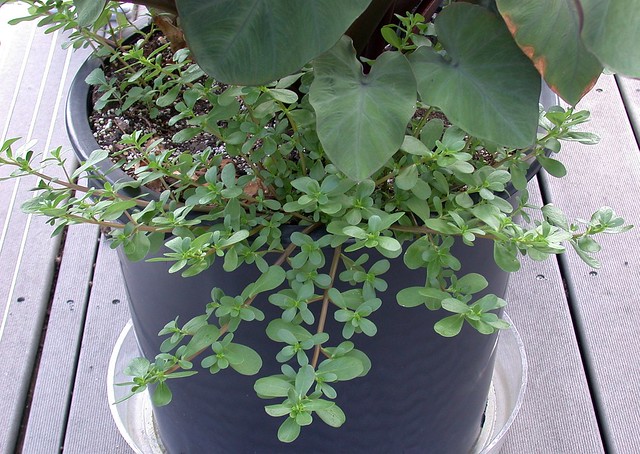
Purslane (Portulaca oleracea), "companion planted" with elephant ear
A couple of years ago I was at a nice restaurant, eating a fancy salad, when I realized that I was eating weeds. Yes, there was purslane in my salad and it was the exact same weed I'd been pulling out of my garden beds and potted plants for years. That's when I realized that if they can put it in a fancy salad, I can eat the damn thing from my own back yard. And that's exactly what I've been doing.
Purslane (Portulaca oleracea) is a nearly cosmopolitan, fast-growing annual weed, probably coming originally from north Africa, the Middle East and/or India but as with so many widespread and common weeds, nobody really knows for sure. The plant produces flat, somewhat succulent, teardrop-shaped leaves on fleshy stems that usually grow pressed against the ground. I don't think I've ever seen the tiny yellow flowers, but it sets seeds prolifically and the flowers may self-pollinate without ever opening (cleistogamy). Or maybe they just open early in the morning; I'm not a morning person so I haven't been able to confirm this!

Purslane flowers (photo courtesy of Scott Zona)
Purslane has been cultivated in the Old World for medicinal and culinary purposes for hundreds, if not thousands, of years but not so much in these parts. The species was formally described by Linnaeus in 1753. The specific epithet "oleracea" derives from the Latin olus and oleris and Stearn's Botanical Latin defines "oleraceus" as "pertaining to kitchen gardens, either as a pot-herb or vegetable or as a weed." The entire plant is edible (although I'm not sure I would want to eat the roots). Older stems can be tough but the younger stems are nicely crunchy and all parts have a pleasant, mildly sour flavor.
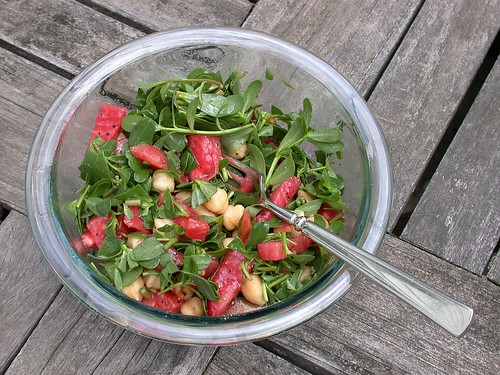
Purslane salad with heirloom tomatoes and chick peas
Purslane is both tasty and nutritious, being a particularly good source of omega-3 fatty acids. But go easy, this vegetable has a mild laxative effect when eaten in quantity. I harvest and chop up the younger parts, stems and all, and find that the crunchy texture and sour flavor combine well with cucumber, avocado, red onion, lime and other citrus flavors in salads. I've also discovered that substituting purslane about 1/4 to 1/3 for basil helps pesto keep its green color. I've never tried cooking with purslane but a Google search turns up lots of recipes.
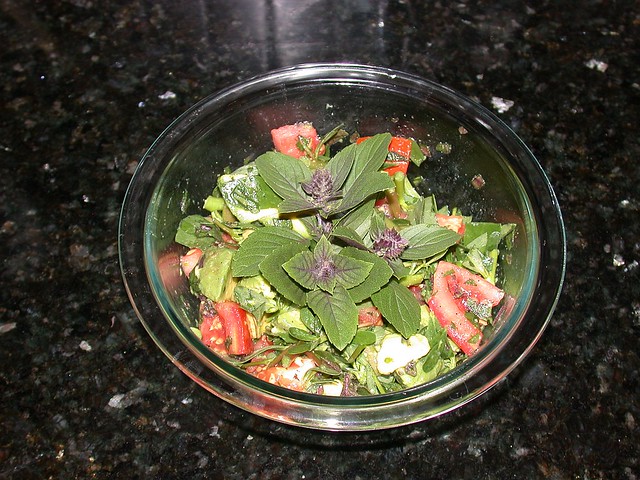
Summer salad with purslane, tomato, cucumber, red onion, african blue basil
This is about as low-maintenance a crop as they come (although for a weed it does require a bit more water than you might think). I let purslane grow in pots with other plants, or in last year's pot of something that died. When the plants get past their prime, I just shake the tiny black seeds out of the older stems wherever I want it to grow next year. You wouldn't think such a common weed would have pests, but if you grow it, they will come. The one I've had the most trouble with is leaf miner. I suppose the leaf miner larvae are just as edible as the purslane, but the infested leaves don't look nice and I just haven't gotten past my mental block about eating bugs yet.

Last year, ginkgo; this year, purslane
In recent years, ornamental bedding plants have been hitting the market labeled as P. oleracea but with large, brilliantly colored flowers in shades of white, yellow, orange, magenta, pink, and purple. I always had a hard time believing this is the same species and wondered what magic the plant breeders could have performed to transform this weed into such a beautiful and desirable garden plant! Upon investigating, I discovered that my hunch was correct and that these showy plants are another species entirely, Portulaca umbraticola, sometimes known as "wingpod purslane". Aside from the larger flowers, this species is easily recognized by the collar or "wing" around the seed capsule.
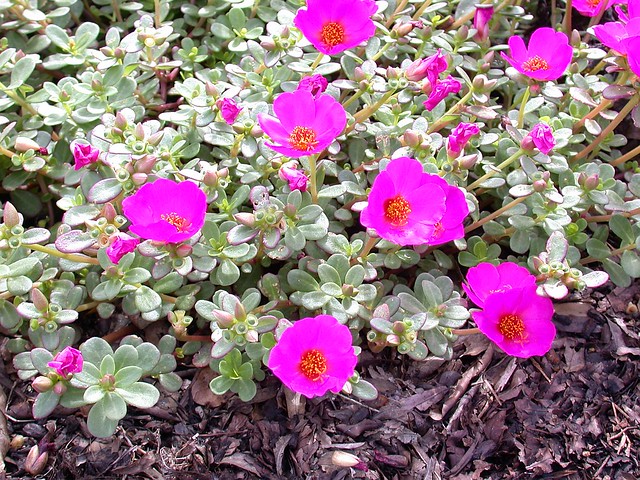
Portulaca umbraticola cultivar. Trial beds at J.C. Raulston Arboretum, July 2013

Portulaca umbraticola, showing seed capsules with characteristic collar or "wing"
Portulaca umbraticola was originally described from Venezuela but has a very widespread distribution in the Americas, including the southern United States. Oddly enough, the plant was described as growing in shady locations and the specific epithet "umbraticola" means "shade dweller" but it performs quite well in full sun. This species holds up to our mid-Atlantic heat and humidity far better than the older P. grandiflora hybrids, but is almost universally mislabeled as P. oleracea in the trade. It's unfortunate that even authoritative references like Armitage's Manual of Annuals, Biennials, and Half-Hardy Perennials have perpetuated this misidentification. For an excellent discussion of this species and its confusion with P. oleracea, see The History of Portulaca umbraticola in Cultivation.
Portulaca (Portulacaceae) is very closely related to the cactus family (Cactaceae) and the satiny flowers of the P. umbraticola cultivars hint at this relationship.
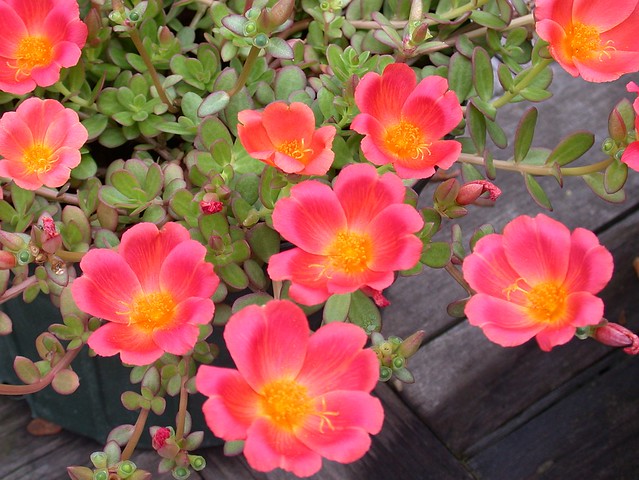
Portulaca umbraticola cultivar
For more information about purslane:
Common purslane, Portulaca oleracea (Wisconsin Master Gardener Program)
Portulaca oleracea (Wikipedia)
Discovering the Purslane Plant, part 1
Discovering the Purslane Plant, part 2
Purslane nutrition facts

Yum! Thanks for the idea.
ReplyDeleteThanks for reading!
Delete